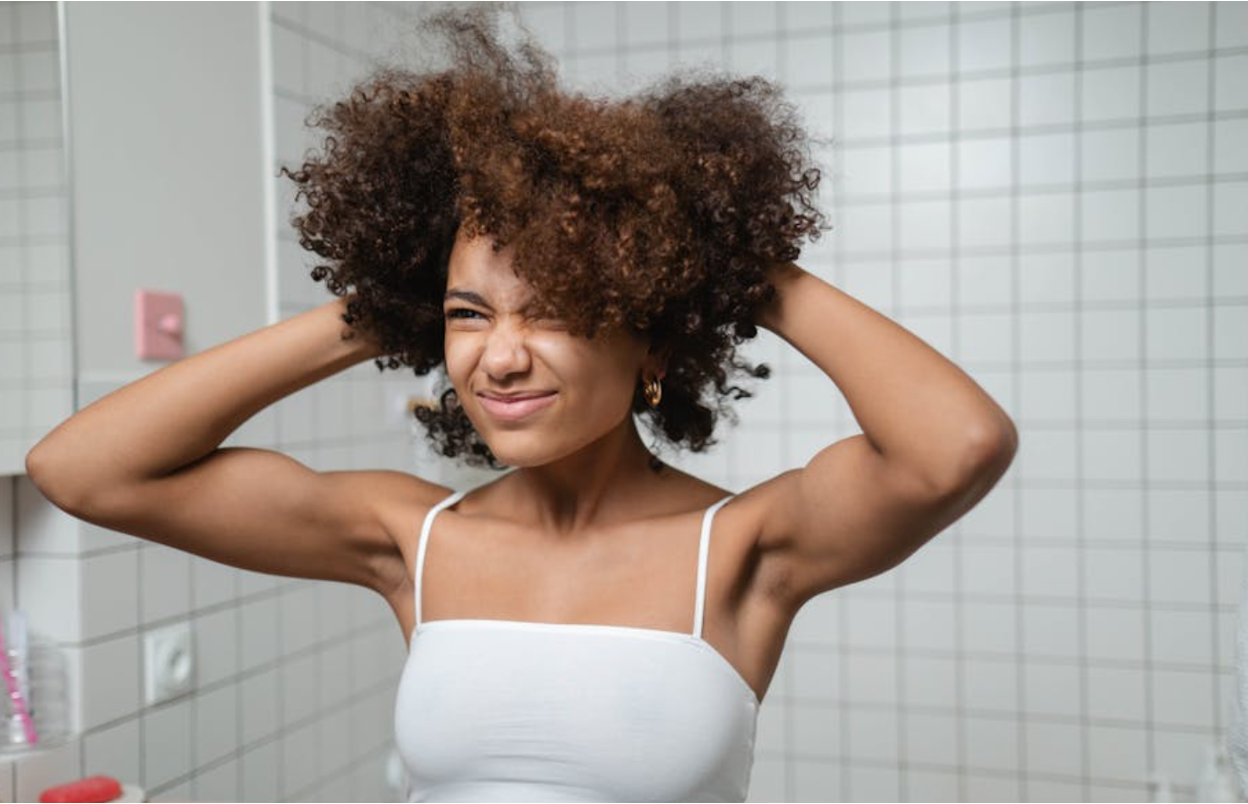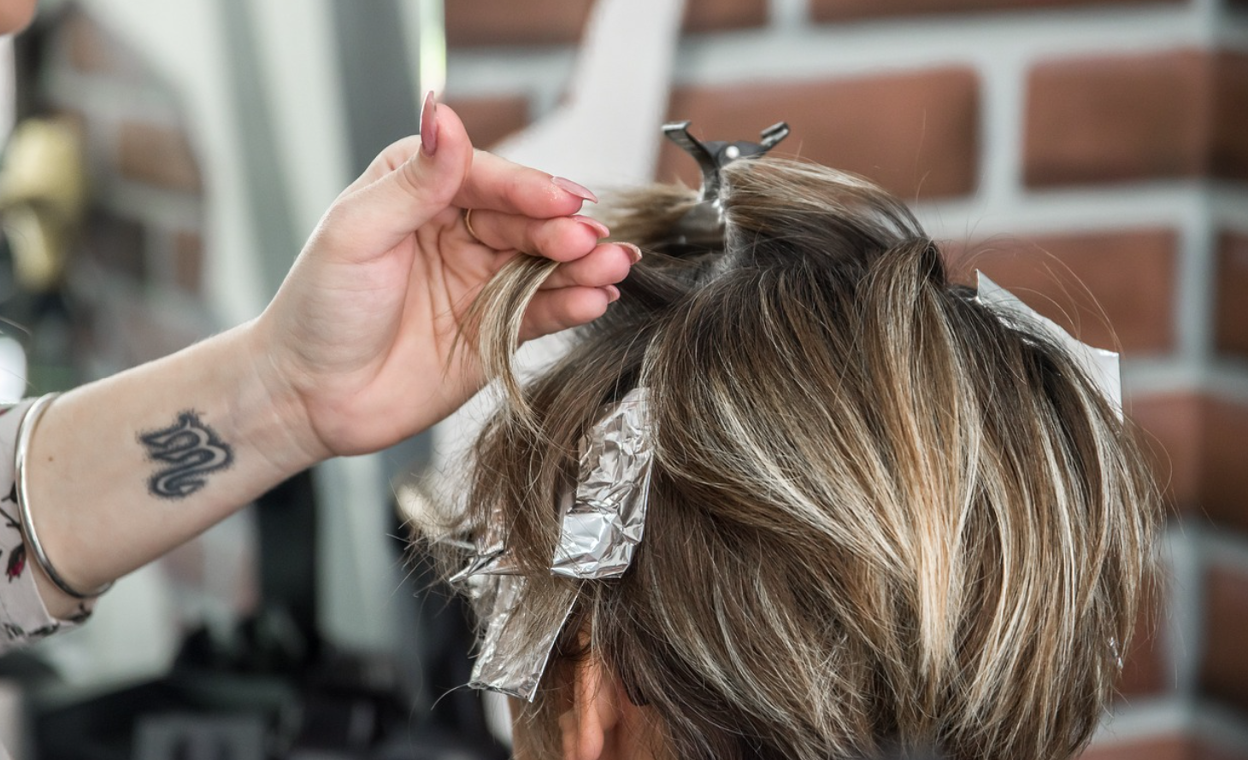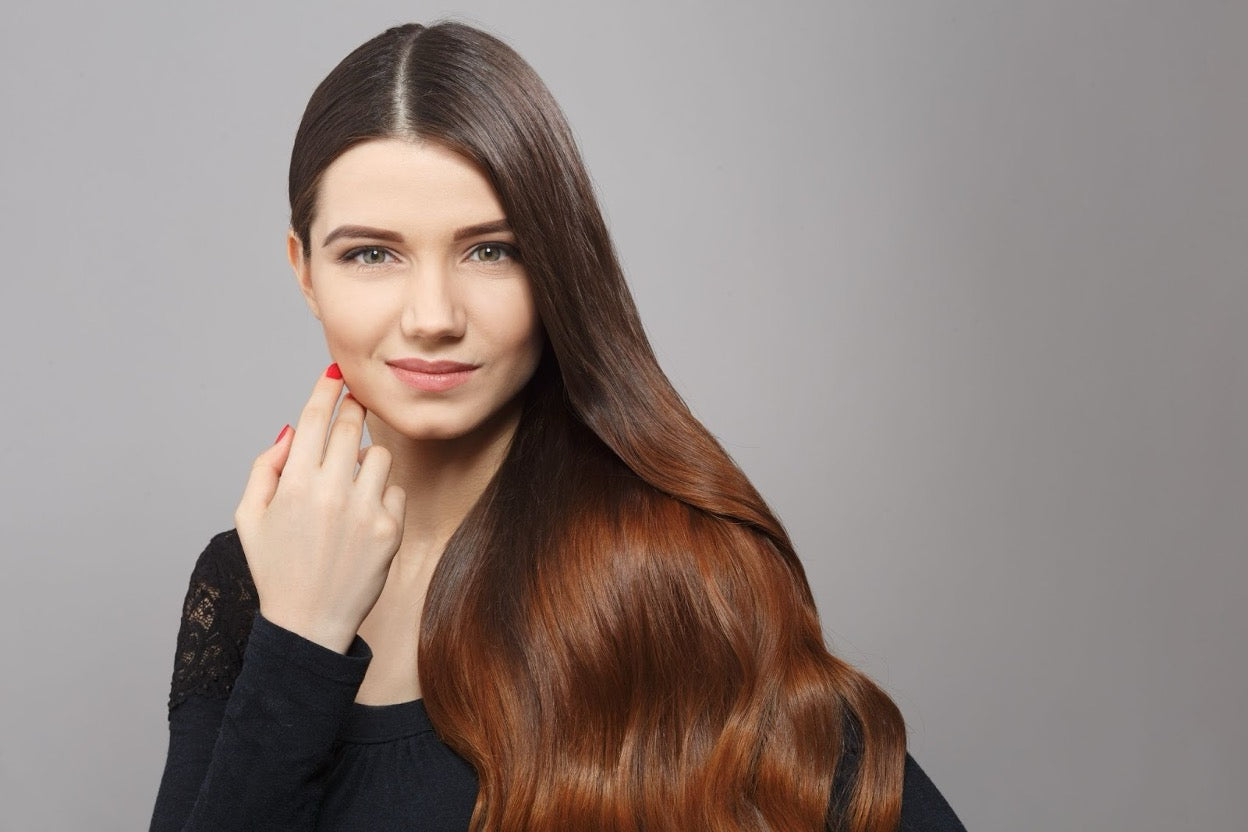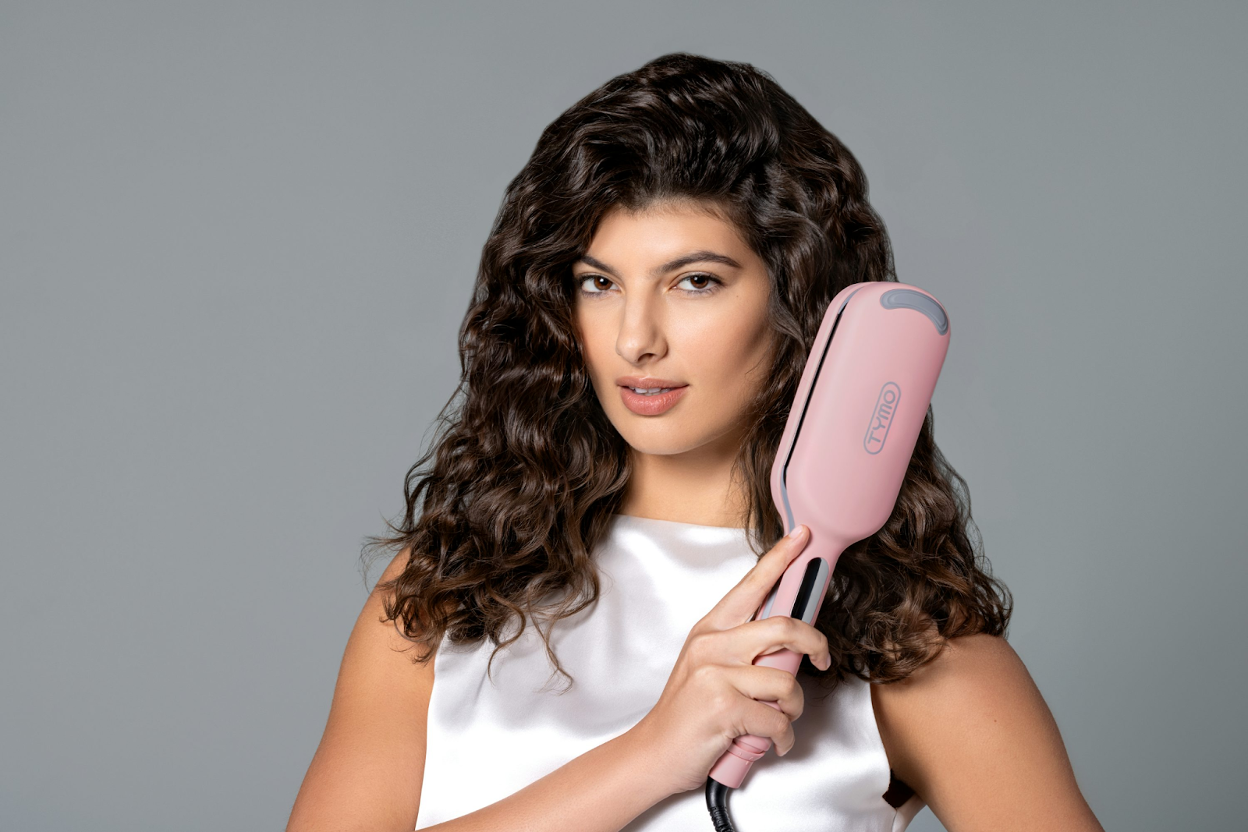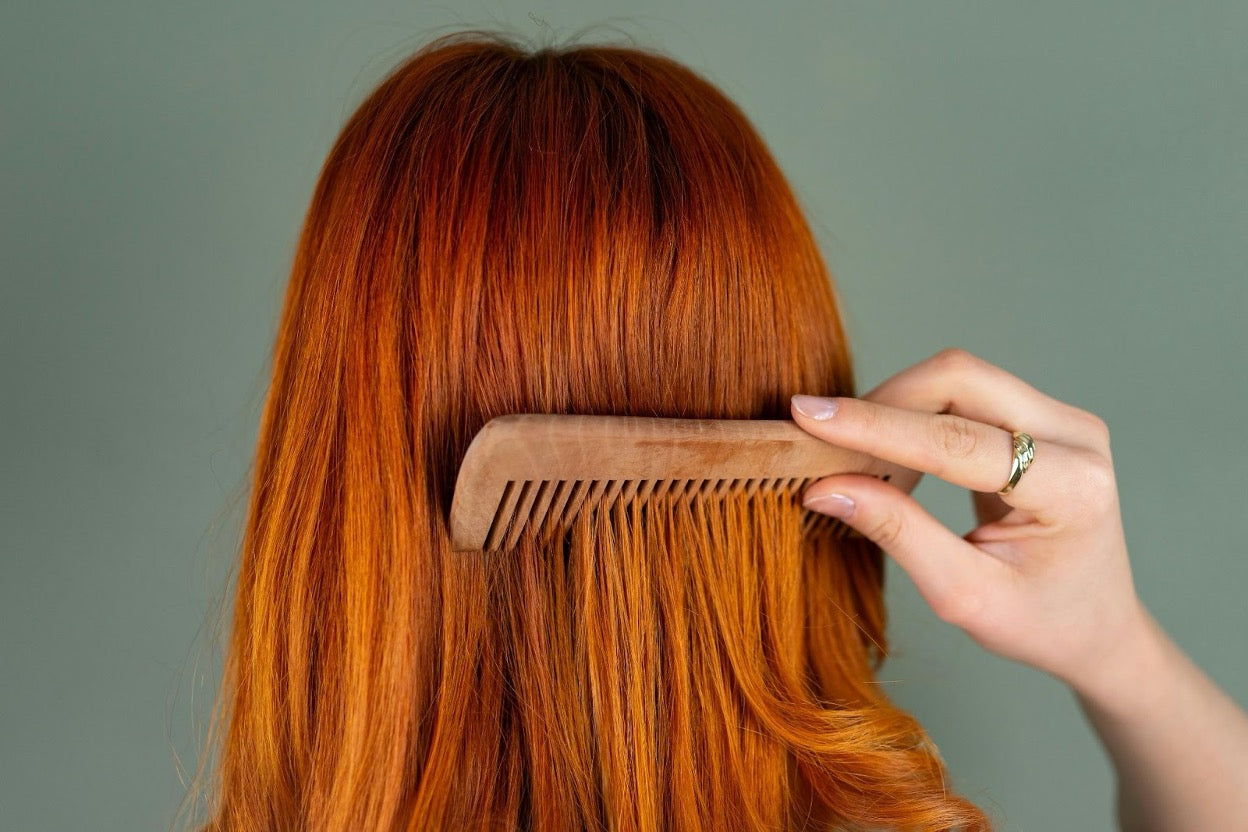Hair Texture Change After Coloring: Solutions & Is It Permanent?
BY TRYBELLO
Nov 18, 2025

Key Takeaways
- Hair coloring lifts the cuticle and alters internal protein bonds, changing how hair feels, absorbs moisture, and responds to styling, especially after permanent or lightening services.
- Fine or pre-damaged hair shows bigger texture shifts, like dryness, frizz, brittleness, or looser curls, due to lipid loss and weakened structural bonds.
- Many texture changes improve with a balanced moisture–protein routine, gentle cleansing, less heat, and regular trims, while heavy bleaching can create long-lasting porosity and reduced elasticity.
- Protein masks, bond builders, and deep conditioners help rebuild strength and smoothness over time, and spacing color sessions protects hair health for the long run.
- Use nourishing, color-safe products, like Trybello Shampoo & Conditioner, gently cleanse, hydrate, and support stronger-looking, smoother, fuller-feeling hair with consistent use.
Why Your Hair Feels Different After Coloring
That distinctive texture change you feel after coloring stems from structural alterations within each hair strand. When you color your hair, especially with permanent dyes, chemicals penetrate the protective cuticle layer to reach the cortex where your natural pigment resides. This necessary invasion disrupts your hair's normal structure, often leaving the cuticle slightly raised rather than lying flat as it does in virgin, undamaged hair.
What many don't realize is that coloring alters how your hair interacts with moisture, styling products, and even the environment. These changes manifest as differences in how your hair feels, moves, and responds to your usual styling routine. Something as simple as how your brush glides through your hair can feel dramatically different after a coloring session.
"Sulfate-Free Hair Growth Duo Delivers Thicker, Fuller Hair Without Harsh Chemicals. 750+ Women Rate This Clean Formula 5 Stars!"
Transform your routine with plant-based shampoo and conditioner that deeply cleanse, nourish, and stimulate growth while protecting the scalp's natural oils.
Growth-Boosting Ingredients
- • Aloe Vera & Turmeric – Cleanses and promotes root growth without stripping oils
- • Urucum Extract – Creates protective barrier against UV damage
- • Camellia Japonica & Shea Butter – Soothes inflammation, deeply hydrates
Clean Beauty Benefits
- • Sulfate-free, vegan, and cruelty-free
- • Plant-based actives with no harsh chemicals
- • Made by USA-based startup

The Science Behind Hair Texture Changes
Hair texture changes after coloring are chemical reactions at a microscopic level. Hair strands have a cuticle, cortex, and sometimes medulla. Coloring lifts the cuticle to deposit or remove pigment, inherently altering structure.
Alkaline agents like ammonia swell the cuticle, while hydrogen peroxide breaks down melanin. This affects protein bonds, smoothness, and elasticity.
Peroxide bleaching penetrates both the cuticle and cortex, causing protein loss and oxidation that increases with treatment severity. Key proteins, including cystine disulphide bonds, are damaged, reducing hair strength and elasticity, while structural degradation allows chemicals to reach deeper fibers, leading to untargeted oxidative effects alongside melanin loss.
How Hair Dye Alters Hair Structure
Permanent hair dyes penetrate deeply through oxidation, modifying keratin proteins and natural lipids. Higher developer volumes intensify these structural changes. Semi-permanent and demi-permanent dyes affect hair more gently, while temporary colors and deposit-only products minimally impact texture.
Why Some Hair Types Change More
Fine hair shows more dramatic changes because it has fewer cuticle layers, offering less protection during chemical processes. Coarser hair retains more natural structure and shows less noticeable texture alteration.
Common Texture Changes After Coloring
Most people notice at least one texture change after coloring. The severity often depends on how drastically hair color is altered; going from dark brown to platinum blonde causes more noticeable effects than subtle highlights or gray coverage. Even gentle color services can slightly change how hair feels or behaves.
Dryness and Brittleness

Dryness after coloring is normal as your hair simply needs consistent hydration to restore softness and shine.
Coloring strips natural lipids that keep hair moisturized and flexible, leaving it dry, rough, and harder to manage. Protein bonds weaken, especially after lightening, making hair brittle and more prone to snapping or breakage during brushing, styling, or sleeping.
Increased Porosity
Chemical processes lift the cuticle, creating gaps that let hair absorb and lose moisture quickly. Highly porous hair dries fast, feels rough, and often appears dull, even after conditioning, as raised cuticles scatter light instead of reflecting it.
Loss of Natural Wave or Curl
Wavy or curly hair may loosen because coloring alters disulfide bonds that shape curls. Patterns can become looser waves or nearly straight. Some changes are temporary, but repeated coloring without care can make them more permanent.
Unexpected Frizz
Even previously smooth hair may develop frizz. Damaged cuticles cause strands to separate rather than lie flat, and humidity worsens the effect. Without proper hydration and protection, frizz can become persistent, making styling less predictable.
Managing Texture Changes
To reduce these effects, use gentle shampoos, deep condition regularly, apply leave-in moisturizers or bond-rebuilding treatments, limit heat styling, and space color appointments appropriately to maintain hair strength, shine, and natural texture.
Are These Changes Really Permanent?
Whether texture changes after coloring are permanent depends on the coloring method, your hair’s starting condition, and post-color care. Understanding severity and timelines helps set realistic expectations.
Short-Term vs. Long-Term Effects
Short-term changes, like dryness, frizz, or minor styling differences, usually appear immediately and can improve within 2–4 weeks as the cuticle settles and oils redistribute with consistent conditioning. Long-term changes occur with structural damage from high-lift processes, such as hair bleaching, causing permanent porosity, elasticity loss, or curl alteration.
When Damage Becomes Irreversible
Irreversible damage happens when protein loss exceeds ~50% or disulfide bonds are heavily broken. Signs include hair that stretches like gum when wet or breaks easily. At this stage, damaged portions must be trimmed, as treatments cannot restore fundamental structure.
Timeline for Recovery
Mild to moderate changes often improve within 1–2 weeks of targeted treatments, with significant recovery by 4 weeks. Severely damaged hair may take 2–3 months, and regrowth replaces damaged sections gradually, with trims helping transition to healthier hair.
7 Professional Solutions to Restore Hair Texture
Repairing color-damaged hair requires addressing both internal structure and surface-level concerns. While no single product works instantly, a consistent combination of treatments gradually rebuilds protein, restores moisture, and improves overall manageability. Consulting a professional stylist ensures a plan specific to your hair’s needs, especially if damage is severe or repeated.
1. Protein Treatments
Protein treatments temporarily fill gaps in the hair shaft where protein was lost during coloring. Hydrolyzed proteins penetrate the cuticle to strengthen hair from within. For moderate damage, weekly use for 2–3 weeks followed by bi-weekly maintenance helps restore strength and elasticity. Avoid overuse, which can make hair stiff or brittle.
2. Deep Conditioning Masks
Masks replenish moisture and smooth the cuticle. Apply to towel-dried hair and cover with a shower cap to improve absorption. Many stylists recommend alternating between protein and moisture masks to balance strength and hydration, keeping hair soft yet resilient.
3. Bond-Building Products
Bond builders target broken disulfide bonds, restoring hair integrity from within the cortex. Use a combination of in-salon and at-home treatments for optimal results. Over time, these products help reduce breakage, frizz, and overall texture roughness.
4. Professional Salon Treatments

Consistent care, gentle cleansing, and targeted treatments lead to gradual but noticeable improvement.
High-strength salon treatments like custom keratin infusions provide concentrated repair. They combine active ingredients for maximum penetration and dramatic texture improvement. Though more expensive than home treatments, they accelerate recovery, particularly for severely damaged hair.
5. Trimming Damaged Ends
Split ends and overly compromised sections cannot fully recover. Regular trims every 6–8 weeks prevent further damage from traveling up the hair shaft and allow healthier hair to thrive. In severe cases, a more substantial cut may be the fastest route to restored texture.
6. Hair Oils and Serums
Oils like argan, jojoba, or dimethicone fill gaps in the cuticle, protect against moisture loss, and reduce friction between strands. Apply to damp hair, focusing on mid-lengths and ends. While oils don’t repair internal structure, they improve hair appearance and make styling easier during the recovery process.
7. Heat-Free Styling Methods
Limiting heat styling helps hair retain moisture and recover faster. Techniques like plopping, braiding damp hair, roller sets, or flexi-rods create defined styles without additional damage. When heat is necessary, always use the lowest effective temperature and a heat protectant for safe styling.
Extra Tips for Recovery
Consistency matters: maintain a regular treatment routine, protect hair from UV exposure, avoid harsh shampoos, and be gentle when detangling. Patience pays off—gradual improvements accumulate, eventually restoring smoother, stronger, and healthier-feeling hair.
Preventing Texture Changes in Future Colorings
Preventing future texture damage is just as important as repairing existing issues. With the right approach, you can maintain your desired color while minimizing impact on your hair’s natural feel and manageability. Planning ahead for each appointment can dramatically reduce unwanted texture changes.
Choose Gentler Color Formulas
Not all hair colors affect texture equally. Ammonia-free or low-ammonia formulations, demi-permanent colors, and techniques like balayage or babylights reduce cuticle disruption. Some professional brands offer bond-protecting additives to protect hair during coloring.
Pre-Color Preparation
Your hair’s condition before coloring influences results. Strengthening treatments 1–2 weeks prior and weekly deep conditioning a month before major changes help fortify protein structure and improve resilience. Avoid dramatic color changes on already compromised hair; sometimes, waiting while focusing on restoration is best.
Communicate With Your Colorist
Discuss texture concerns openly before your appointment. Ask how the chosen service may affect your hair, the protective measures they’ll use, and the recommended post-color care. A skilled colorist will tailor techniques and formulations to balance your color goals with hair health.
When to Accept Your New Texture
Sometimes, despite your best efforts at restoration, your hair settles into a new normal after coloring. This is particularly common after significant color transformations or for hair that's undergone multiple processes over time. Learning to work with, rather than against, your new texture can be liberating.
Experiment with different styling techniques, products formulated specifically for your hair's new properties, and cuts that enhance rather than fight these changes. Many people find that their post-color texture actually offers styling advantages they didn't have before, such as increased volume for previously flat hair or better product absorption for styles that require hold and definition.
Support Your Hair’s Recovery With Trybello Shampoo & Conditioner
Once your hair has been colored and its texture has changed, the right wash routine can make a real difference in restoring softness, strength, and bounce. Trybello shampoo and conditioner are designed to nourish the scalp, protect fragile strands, and support healthier, fuller-looking hair, without stripping natural oils or weighing hair down.

With gentle cleansing and restorative conditioning, Trybello helps color-treated hair stay soft and manageable.
These formulas use clean, plant-powered ingredients like aloe, turmeric, camellia, and shea butter to help soothe the scalp, replenish moisture, and reinforce strands against daily damage. With antioxidants, amino acids, and scalp-stimulating botanicals, this duo helps create a healthier environment for stronger-looking growth while improving the feel and manageability of color-treated hair.
Gentle enough for daily use and free from harsh chemicals, Trybello Shampoo & Conditioner work together to:
- Support scalp balance and comfort
- Cleanse without stripping essential oils
- Hydrate and smooth damaged cuticles
- Reduce dryness, brittleness, and frizz
- Enhance fullness and softness with consistent use
If you want your color-treated hair to feel stronger, smoother, and more resilient over time, integrating Trybello’s system into your routine can help bring back that touchable texture, all while supporting long-term hair wellness.
Ready for hair that feels as good as it looks? Start with Trybello today!
Frequently Asked Questions (FAQs)
Trending Topics
See our latests posts #TRYBELLO




